Mariton: Hackberry Trees
by Tim Burris, Preserve Manager
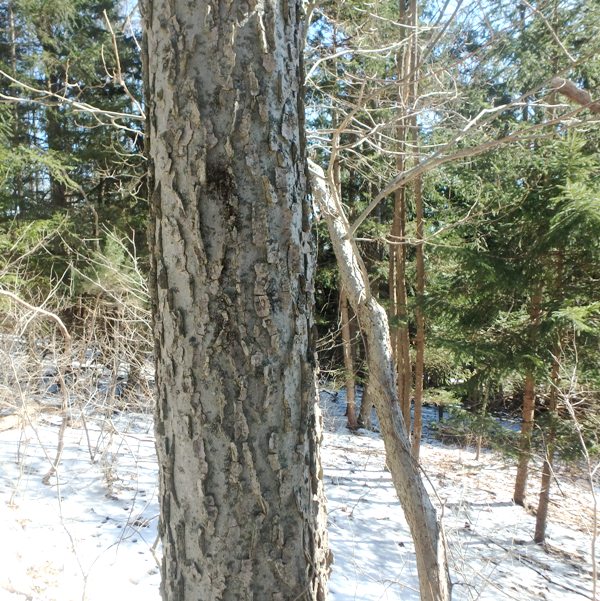
Hackberry’s interesting bark.
A few weeks ago I wrote about the interesting bark on Ironwood and Musclewood. Hackberry (Celtis occidentalis) is another tree that I admire with unique bark. There is a lot of varitation in this tree’s bark. Young trees often have little warty bumps on an otherwise smooth gray bark. That can quickly change to deeply furrowed corky bark. Older trees often have smooth areas with wing-like scales.
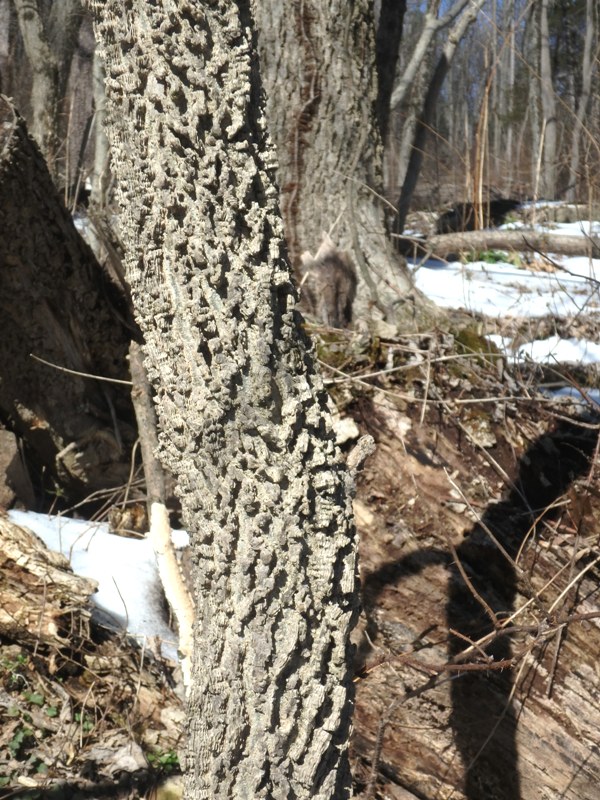
A young tree with lots of texture.
This tree is in the elm family, and has an attractive vase shape with a spreading crown. It can reach 60 feet and likes sunlight, but can live in a variety of soils. I have found it in swamps as well on highlands, and it can survive both flooding and droughts. It has small, light green leaves that offer dappled shade and can tolerate air pollution making it a graceful street tree. It also produces small drupes that are mostly seed with a leathery blue-black coating. Another name for Hackberry is Sugarberry. If you suck one of the berries you won’t get much juice, but will definitely taste the sweetness. Birds are attracted to the fruit.
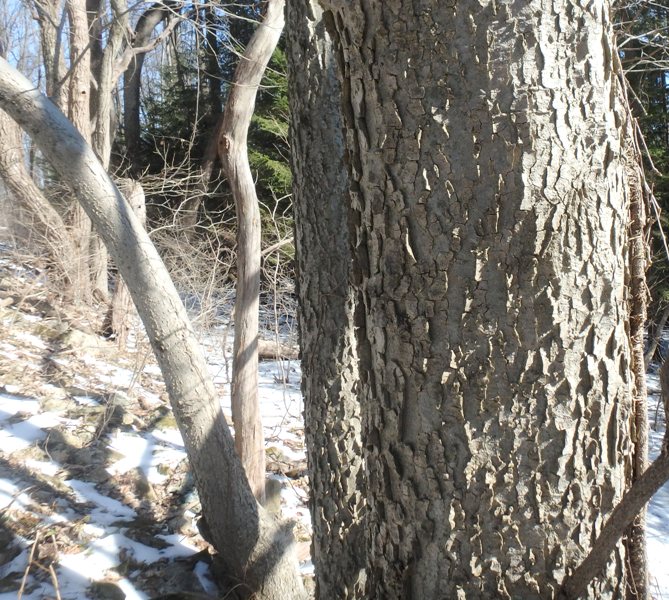
The bark has lots of variation as seen in the background tree.
Besides birds, this tree attracts many butterflies including the Hackberry Emperor. This beautiful butterfly is attracted to light colored backgrounds and often lands on people and their clothing.
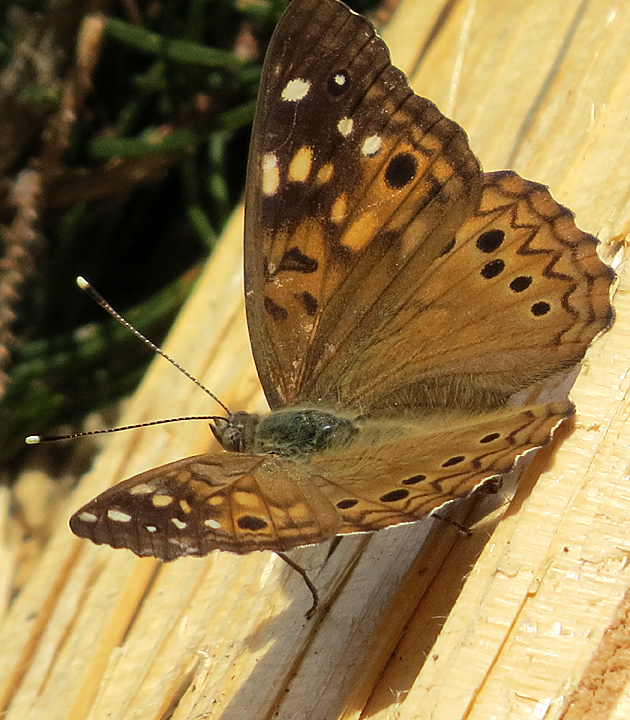
Hackberry Emperor on a broken branch. Photo by Carole Mebus.
Many years ago I was milling a hackberry tree that had fallen over at Mariton. The wood is very white. It was early fall and as I milled the log dozens of Hackberry Emperors landed on the boards to suck up moisture from the sawdust. It was an amazing sight.
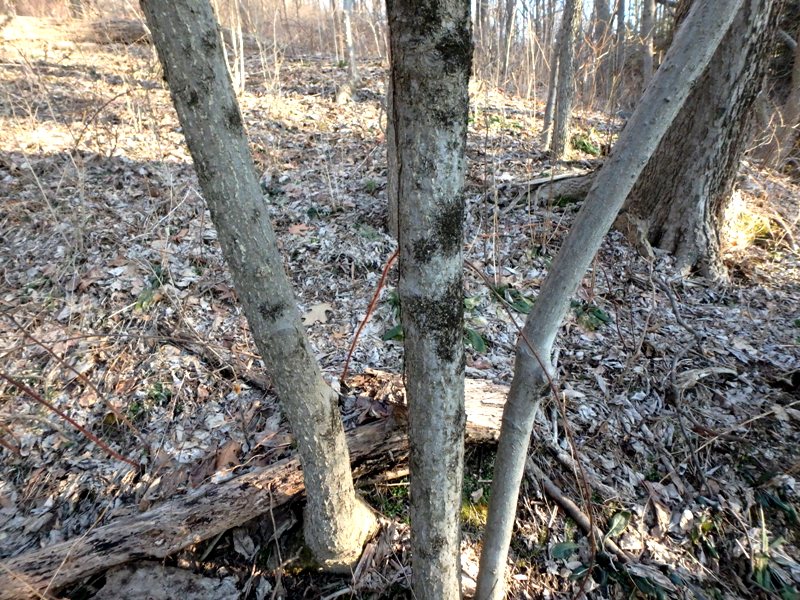
Showing variation of bark and how they like to form groves.
Hackberry suckers easily, and so could provide an island focal point in a yard. This attractive tree provides interest in all seasons and makes a nice addition to any landscape.
